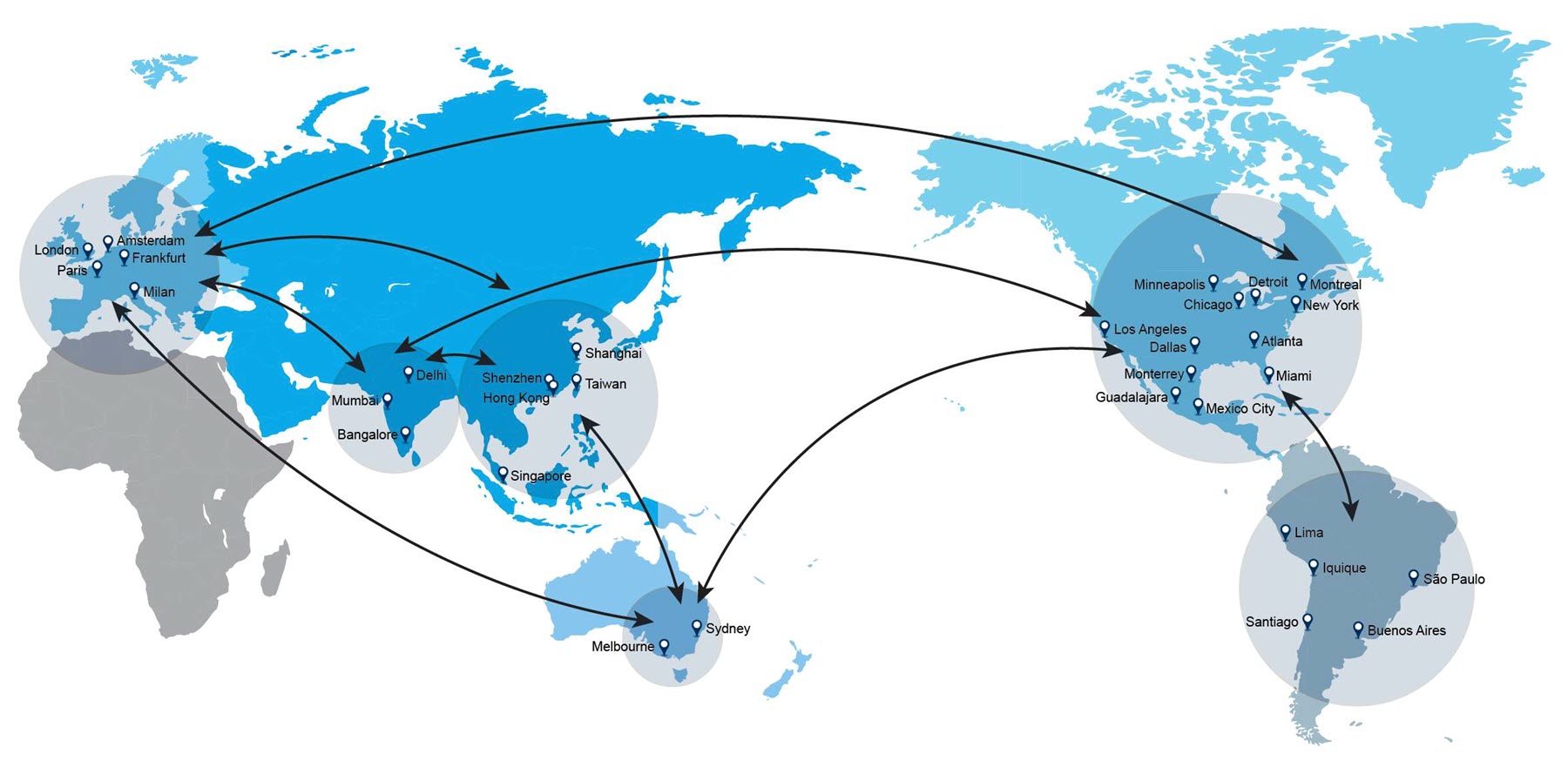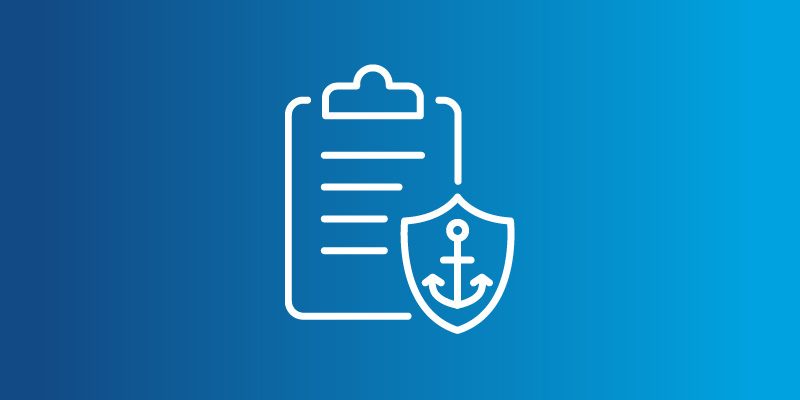Reliable air freight capacity when you need it most

Smart air delivering done right
Deliver your time-sensitive freight with flexible air cargo options from C.H. Robinson. Get more negotiating power with leading airlines and access to capacity when you tap into our unrivalled scale and unmatched expertise.
Air freight options for every need
Elevate your air deliveries with value added services
Heavy & oversized
Transport your overdimensional air freight—we’ll co-ordinate every move with care.
Temperature Controlled Air
From refrigeration to freeze protection, mitigate risks and protect your air freight.
U.S. domestic expedited
Gain negotiating power with domestic air freight carriers—even on short notice.
What sets C.H. Robinson air freight services apart
Move your air cargo through our global network
Our core air delivering corridors span the globe, connecting major trade hubs across North America, Europe, Asia and Latin America. From popular hubs to emerging cities, our global air delivery network makes it simple to improve supply chain agility.

content.testimonialHeading
Get the latest intel. Own the competition.
The C.H. Robinson Edge delivers expert advice on what’s new, what’s next and what to do about it. With the leading freight market insights, powered by unmatched expertise and data of the market leader, you can stay ahead in today’s fast-changing world economy—where supply chains can make or break business success.
Frequently asked questions
Q: What is air freight delivery?
Air freight delivery (also called air cargo or air delivery) is the transportation of goods by aircraft. It is the fastest and one of the most reliable modes of delivering, often used for time-sensitive, high-value or long-distance deliveries.
Because air freight is more expensive than other methods, it’s generally reserved for urgent or high-priority cargo that needs to arrive within days rather than weeks. In summary, air delivery means moving products through the air (via cargo planes or passenger aircraft) to achieve faster delivery.
Q: How does air delivering work?
Air delivery involves a series of steps to get your goods from origin to destination via aeroplane:
- Booking & documentation: You start by booking an air delivery with an airline or freight forwarder, providing details about your cargo. Necessary documents (e.g., an air waybill and customs paperwork for international loads) are prepared at this stage.
- Export handling: The freight is picked up and transported to the departure airport. Air cargo undergoes security screening and is consolidated if needed (often packed into a unit load device container or pallet with other deliveries). Ground crews then load the cargo into the aircraft’s cargo hold.
- Air transport: The aeroplane (either a dedicated cargo plane or a passenger flight with cargo space) carries the delivery through the air to the destination airport. This flight drastically reduces transit time compared to surface transport, especially over long distances.
- Arrival & delivery: Upon arrival, the cargo is unloaded. For international deliveries, it must clear customs at the destination country’s airport (with customs officials inspecting documents and the goods). After clearance, the freight is transported from the airport to its final destination (e.g., by truck or local courier) for delivery to the receiver (consignee). Throughout this process, co-ordination between the shipper, carrier, customs brokers and forwarders ensures the delivery moves smoothly from pickup to final delivery.
Q: What are the benefits of delivering via air?
Delivering freight by air offers several advantages for global shippers:
- Speed: Air freight is by far the fastest delivery method, with transit times of hours or days instead of weeks. This enables urgent replenishment of stock and last-minute delivery to meet tight deadlines.
- Global reach: You can deliver almost anywhere in the world via air. Major airlines and air cargo networks connect thousands of airports globally, making remote or landlocked regions accessible via connecting flights.
- Inventory management: The speed of air freight reduces warehouse inventory levels and is often critical for just-in-time supply chains. Perishable or seasonal goods can arrive to market in time, avoiding obsolescence.
- Tracking visibility: Air freight usually comes with advanced tracking and visibility. Shippers can get real-time updates on a delivery’s status and more precise ETA, which aids planning.
Q: Is air delivering expensive?
Yes. Air delivery is typically the most expensive mode of freight transport. It can cost significantly more than ocean freight for the same volume of goods.
However, shippers have options to manage air freight costs. Many carriers offer different service levels—from urgent next-flight-out options to deferred economy services—at varying price points. By choosing a slightly slower air service or consolidating cargo, you can obtain more economical rates while still moving goods faster than via ocean or road transport.
Q: How long does delivering by air take?
Air delivering transit times are much faster than other methods, but the exact duration depends on the service level and route distance:
- Express/priority air: Typically 1-3 days for major international routes. This is the fastest option and often uses direct flights or premium services that prioritise your cargo.
- Standard air freight: Usually around 3-7 days transit. Standard services balance speed and cost and may involve one or two stopovers for connecting flights.
- Economy/deferred air: Approximately 5-10 days (or longer) depending on how many stops or consolidations are involved.
- Domestic air deliveries: For deliveries moving within the same country or region, delivery can be as quick as overnight up to two days, depending on the distance and whether a direct flight is available.
By comparison, ocean freight from, say, Asia to North America can take 3-6 weeks. So even the slowest air freight service is considerably faster than delivering by sea. Keep in mind the clock for air transit does not include pickup, customs clearance or final delivery on the ground, but even including those, air is still the speediest option for long-range delivering.
Q: Are there any cargo restrictions delivering by air?
Cargo restrictions are in place for nine classes of dangerous goods. Some goods are too dangerous to transport on any aircraft, while others need approval from the aviation authority of the countries involved.
Q: Can you deliver oversize cargo by air?
While there are limits, oversized or heavy cargo can be delivered by air. Standard passenger planes have limited cargo door sizes and weight capacities, so extremely large or heavy items won’t fit on them.
Instead, freight forwarders use dedicated cargo aircraft (freighters) or charter an entire plane for oversized loads. Airlines and logistics providers operate large freighter models, like Boeing 747Fs or Antonov AN-124s, which are designed to carry out-of-gauge cargo. These aircrafts can accommodate industrial machinery, vehicles and other bulky equipment that exceed the size of regular aircraft pallets.
Q: Is air freight a sustainable mode of transport?
Air freight is not the most sustainable mode of transport. In fact, aircrafts emit the most greenhouse gases per tonne kilometre, meaning it has the greatest environmental impact over other modes of transport.
Q: Is air delivery worth it?
Whether air delivery is “worth it” comes down to balancing cost versus benefit for your specific needs. Air freight rates are high, but the service is very fast and reliable. It is generally worth the expense in scenarios where the speed advantage creates value:
- Time-critical deliveries: If your delivery absolutely must arrive within a few days (e.g., an urgent machine part to prevent a factory shutdown or fresh perishables that would spoil if delayed), the cost of air freight is justified by avoiding a far more expensive stockout or spoilage situation. The quick transit can save your business money in the bigger picture by meeting a critical deadline.
- High-value goods: For products with a high dollar value relative to their weight, the added cost of air delivering may be a small percentage of the item’s value. A common guideline is that air freight is worthwhile if delivering costs remain below about 15-20% of the goods’ value. In these cases, the security and fast turnover of inventory by air can be worth it. For example, delivering consumer electronics or fashion items by air can ensure that you catch a market window or avoid inventory depreciation.
- Supply chain efficiency: Using air freight can reduce the need to keep large inventories (since replenishment is faster). If holding inventory is very costly for you, paying for air to enable just-in-time delivery might be worth it. It can also help startups and retailers react quickly to demand without overstocking, which can outweigh transport costs.
Q: What is the difference between air freight and ocean freight?
Air freight and ocean freight differ mainly in speed, cost and capacity:
- Transit time: Air is fastest, with deliveries arriving in 1-5 days internationally. Ocean freight can take 20-30 days or longer, making it better only if speed isn’t critical.
- Cost: Air is 5-10 times more expensive than ocean. Ocean is far more economical for high-volume freight.
- Environmental impact: Ocean is far greener, with a much lower carbon footprint. Air freight has the highest emissions per ton-kilometre.
Which should you choose?
- Choose air freight for urgent, high-value or time-sensitive cargo.
- Choose ocean freight for large, heavy or lower-value deliveries where cost savings outweigh speed.
- Many businesses use a mix—air for urgent replenishment, ocean for bulk replenishment.
Related services to elevate your delivery strategy

Customs brokerage
Clear customs quickly with in-house, licensed brokers who understand how to minimise risks and unnecessary costs.

Trade policy consulting
Ensure compliance and prevent costly penalties with expert guidance on trade policies and regulations.

Marine Cargo Insurance
Protect your valuable cargo from potential loss or damage with comprehensive marine insurance.





